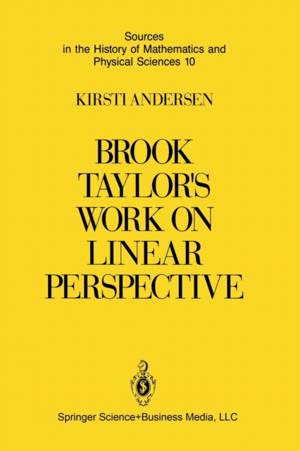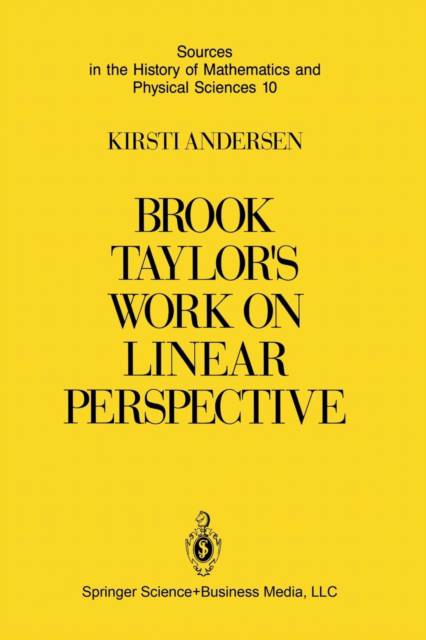
- Afhalen na 1 uur in een winkel met voorraad
- Gratis thuislevering in België vanaf € 30
- Ruim aanbod met 7 miljoen producten
- Afhalen na 1 uur in een winkel met voorraad
- Gratis thuislevering in België vanaf € 30
- Ruim aanbod met 7 miljoen producten
Zoeken
Brook Taylor's Work on Linear Perspective
A Study of Taylor's Role in the History of Perspective Geometry. Including Facsimiles of Taylor's Two Books on Perspective
Kirsti Andersen
€ 167,95
+ 335 punten
Uitvoering
Omschrijving
The aim of this book is to make accessible the two important but rare works of Brook Taylor and to describe his role in the history of linear perspective. Taylor's works, Linear Perspective and New Principles on Linear Perspective, are among the most important sources in the history of the theory of perspective. This text focuses on two aspects of this history. The first is the development, starting in the beginning of the 17th century, of a mathematical theory of perspective where gifted mathematicians used their creativity to solve basic problems of perspective and simultaneously were inspired to consider more general problems in the projective geometry. Taylor was one of the key figures in this development. The second aspect concerns the problem of transmitting the knowledge gained by mathematicians to the practitioners. Although Taylor's books were mathematical rather than challenging, he was the first mathematician to succeed in making the practitioners interested in teaching the theoretical foundation of perspective. He became so important in the development that he was named "the father of modern perspective" in England. The English school of Taylor followers contained among others the painter John Kirby and Joseph Highmore and the scientist Joseph Priestley. After its translation to Italian and French in the 1750s, Taylor's work became popular on the continent.
Specificaties
Betrokkenen
- Auteur(s):
- Uitgeverij:
Inhoud
- Aantal bladzijden:
- 259
- Taal:
- Engels
- Reeks:
- Reeksnummer:
- nr. 10
Eigenschappen
- Productcode (EAN):
- 9781461269519
- Verschijningsdatum:
- 30/09/2012
- Uitvoering:
- Paperback
- Formaat:
- Trade paperback (VS)
- Afmetingen:
- 156 mm x 234 mm
- Gewicht:
- 385 g

Alleen bij Standaard Boekhandel
+ 335 punten op je klantenkaart van Standaard Boekhandel
Beoordelingen
We publiceren alleen reviews die voldoen aan de voorwaarden voor reviews. Bekijk onze voorwaarden voor reviews.











